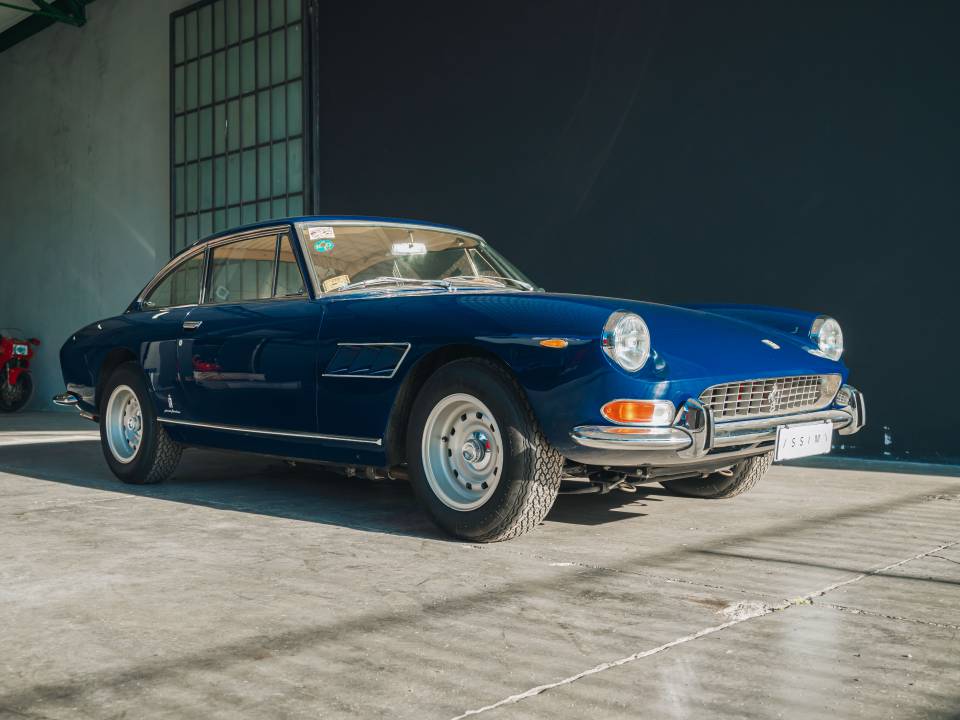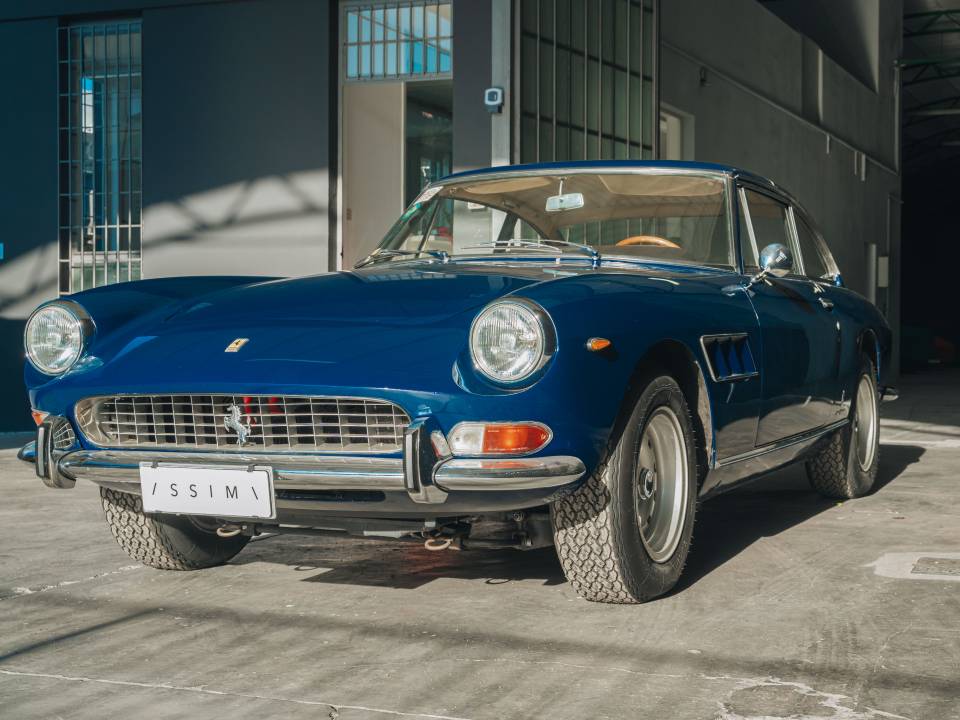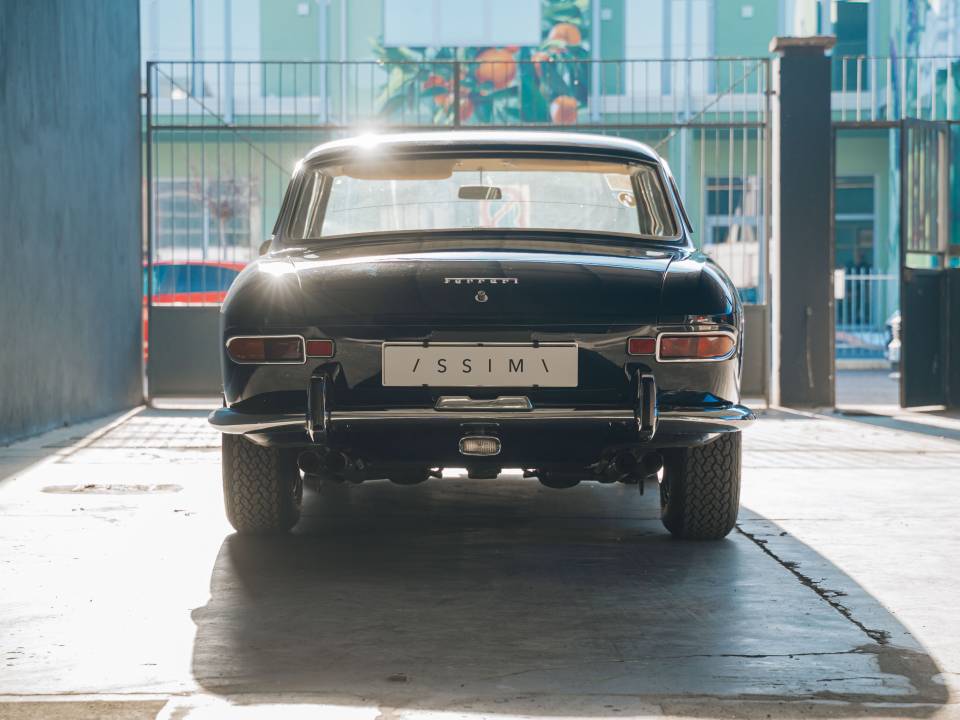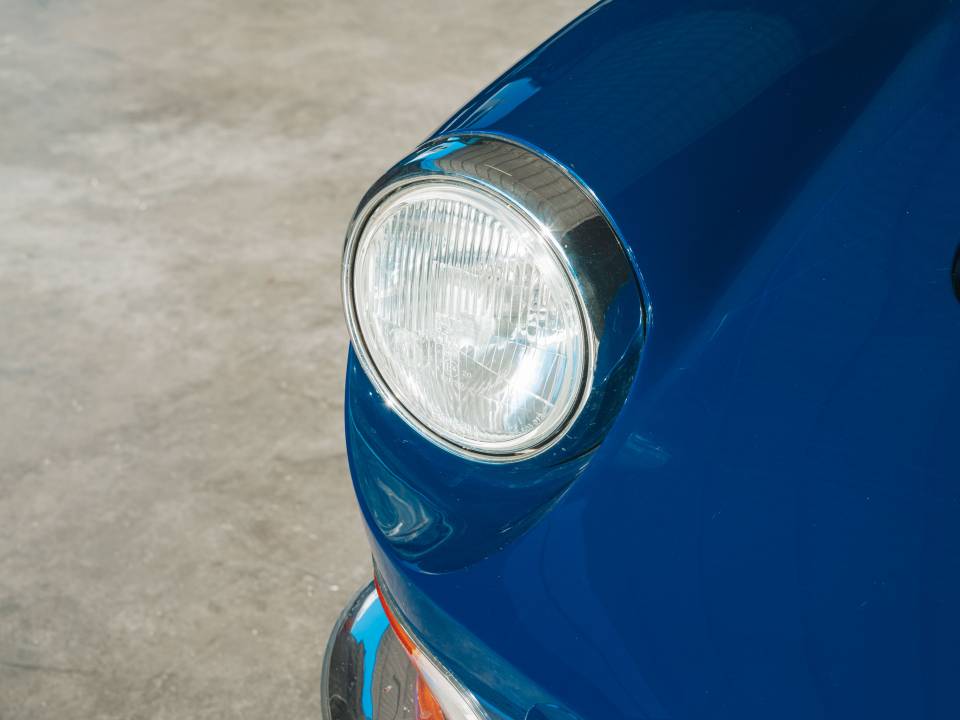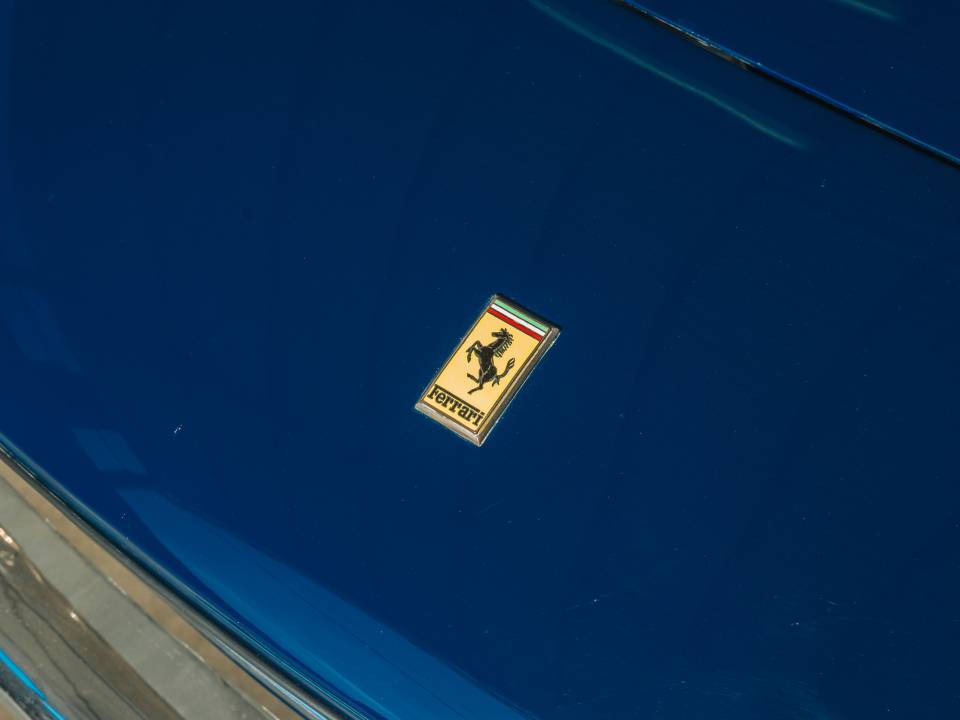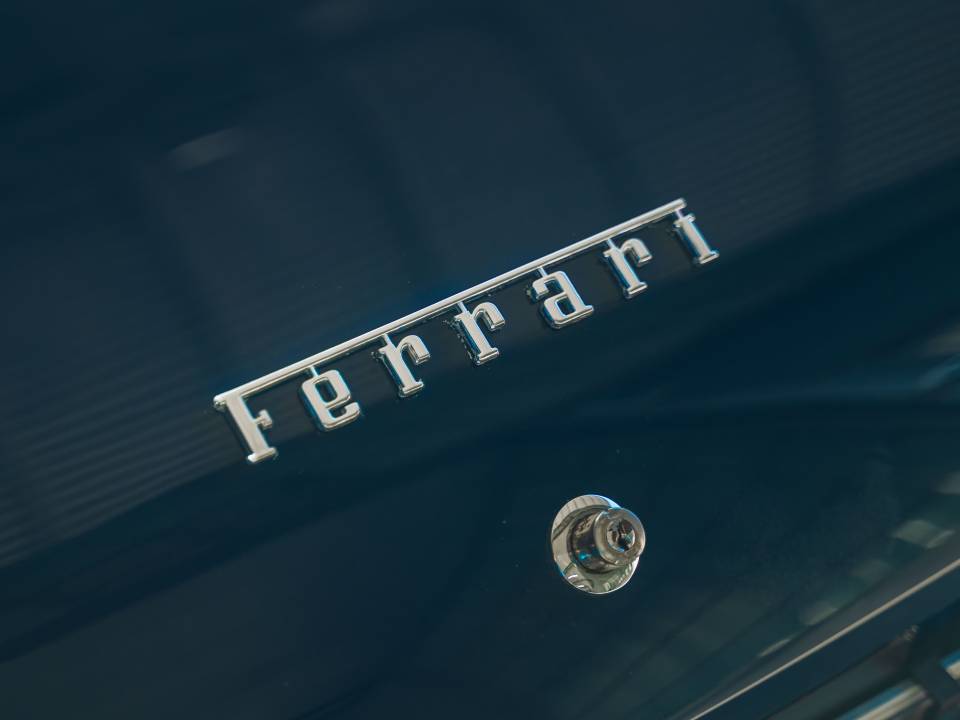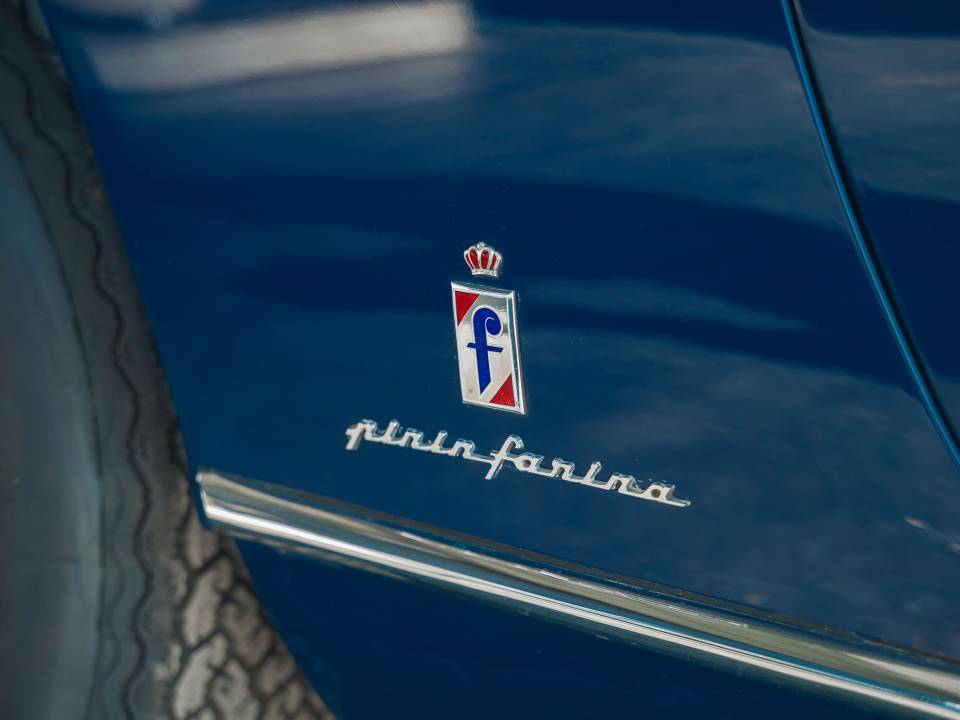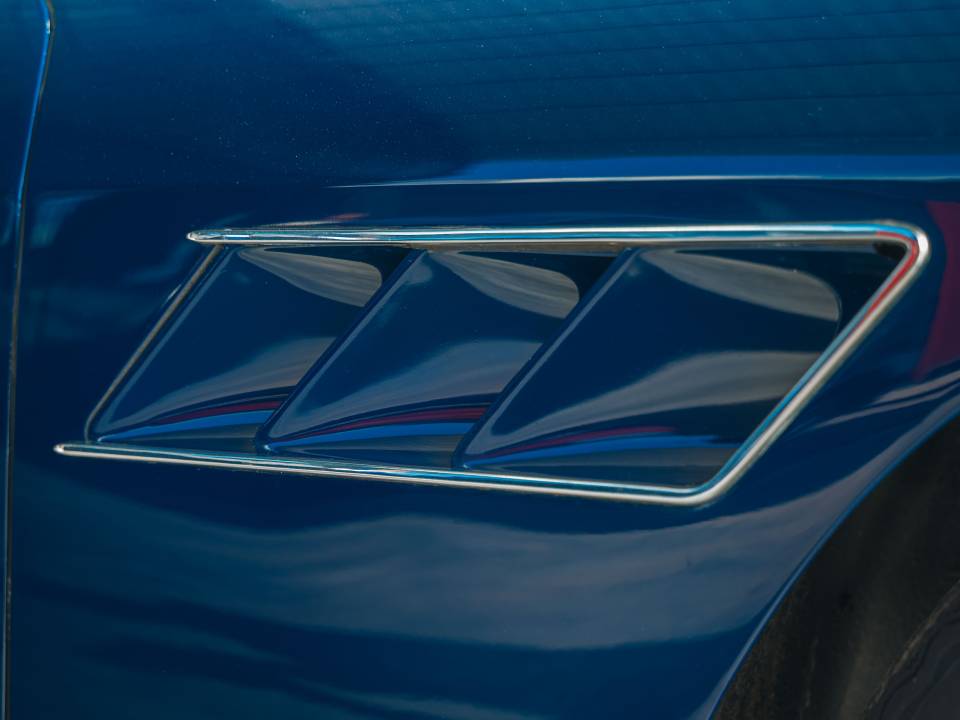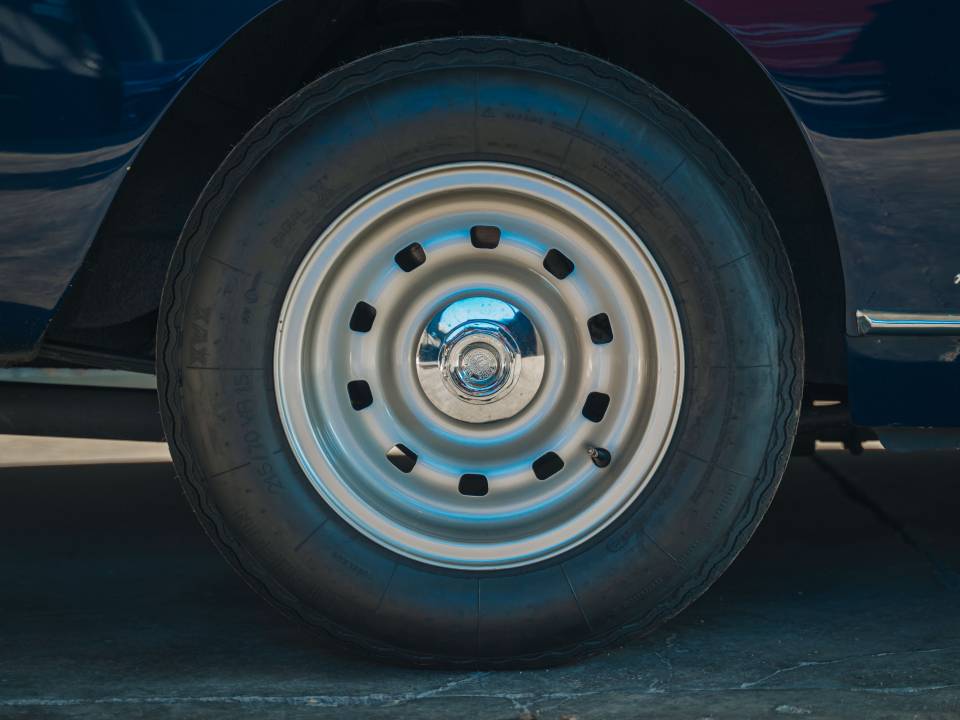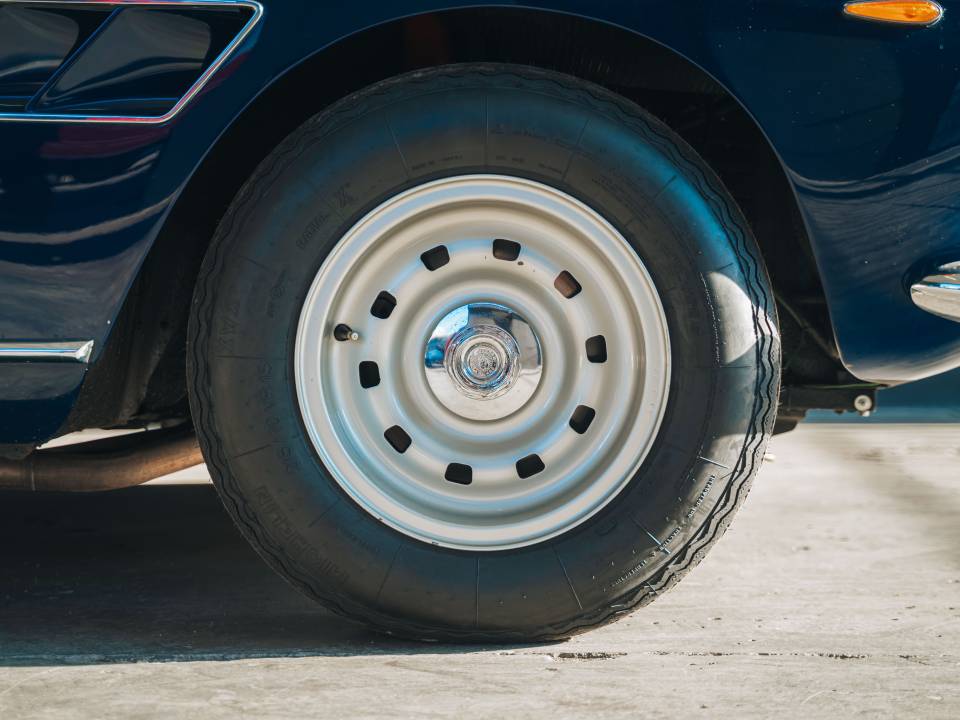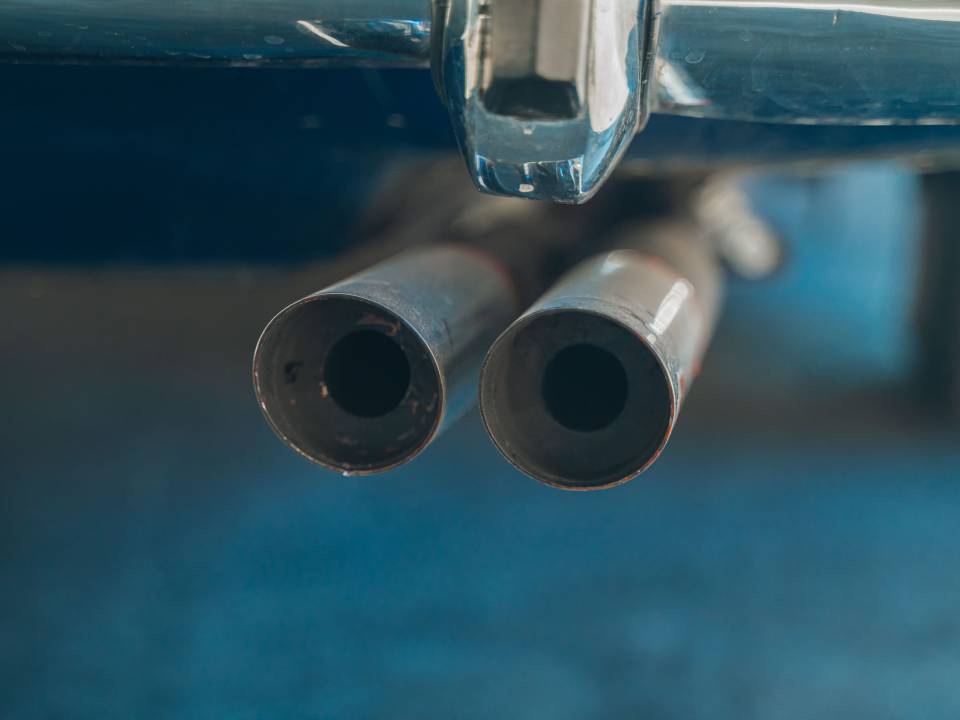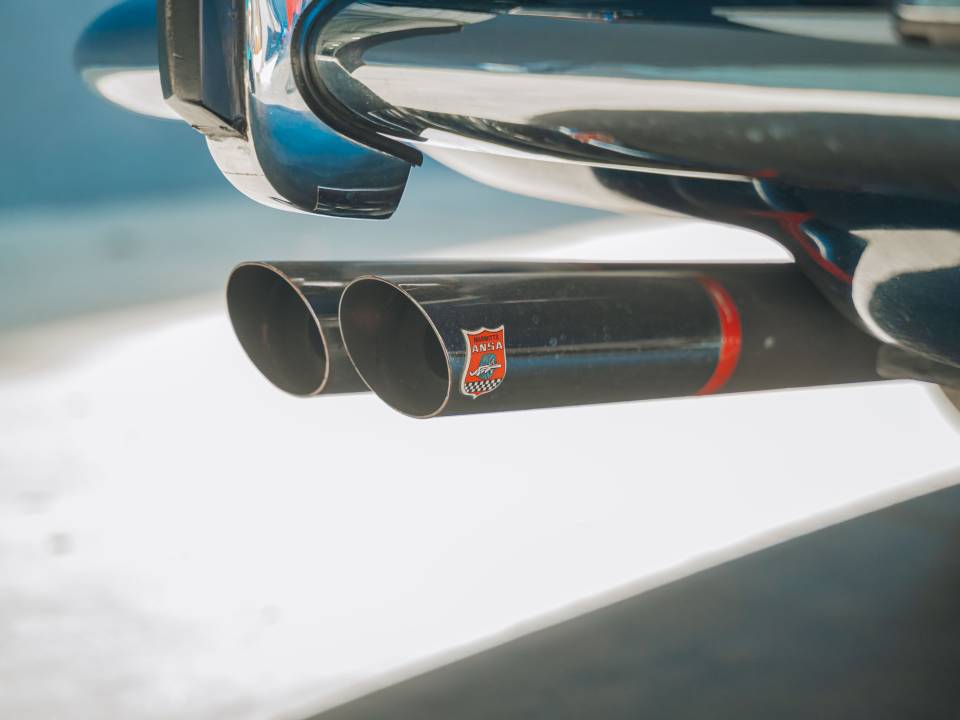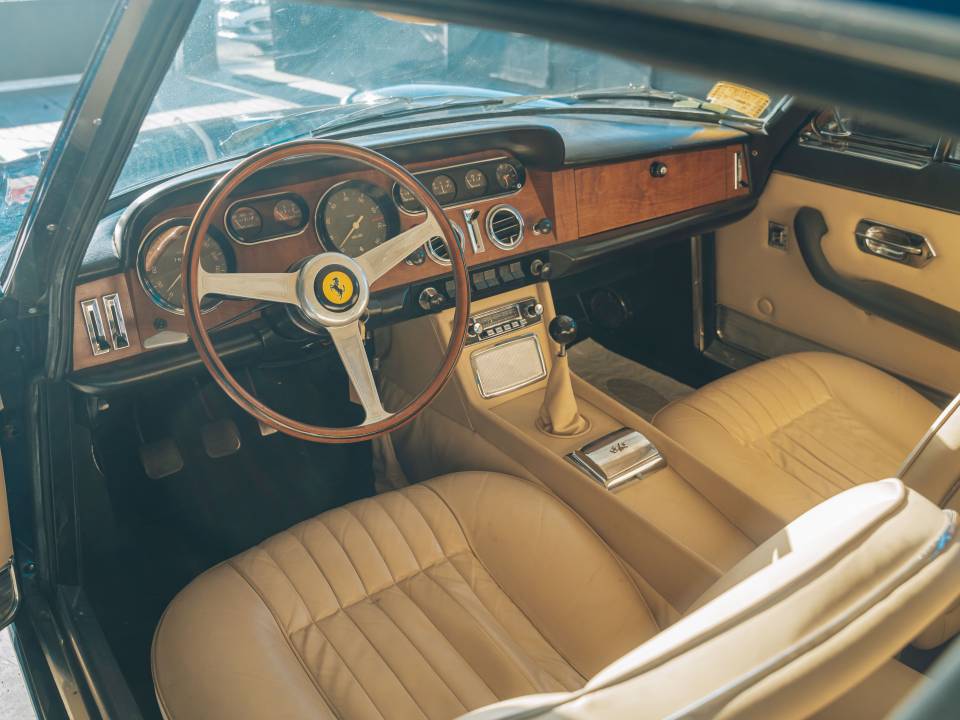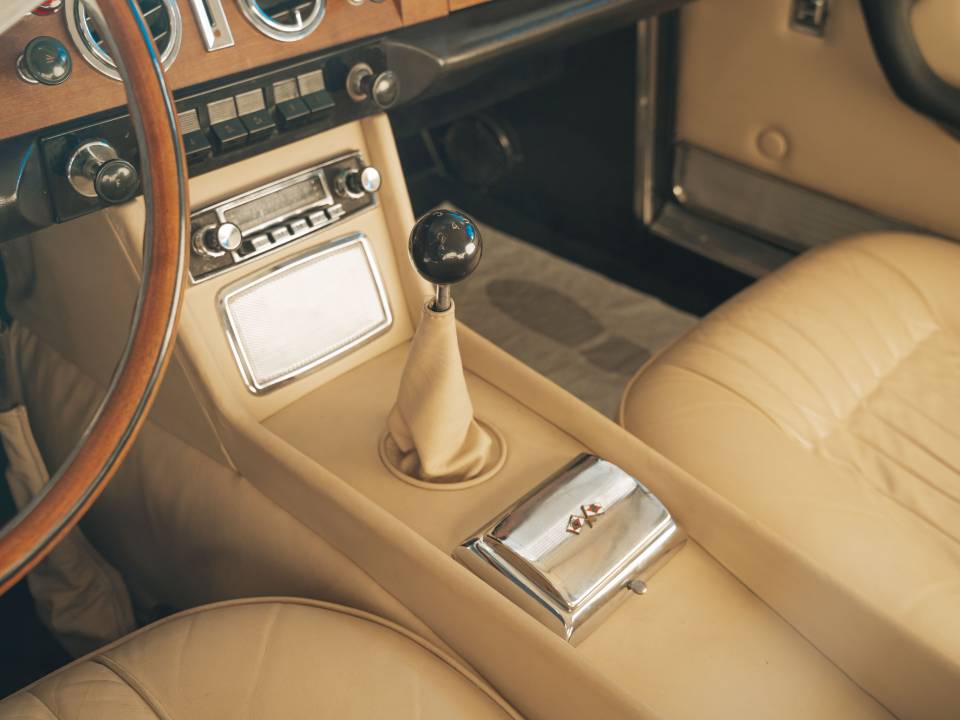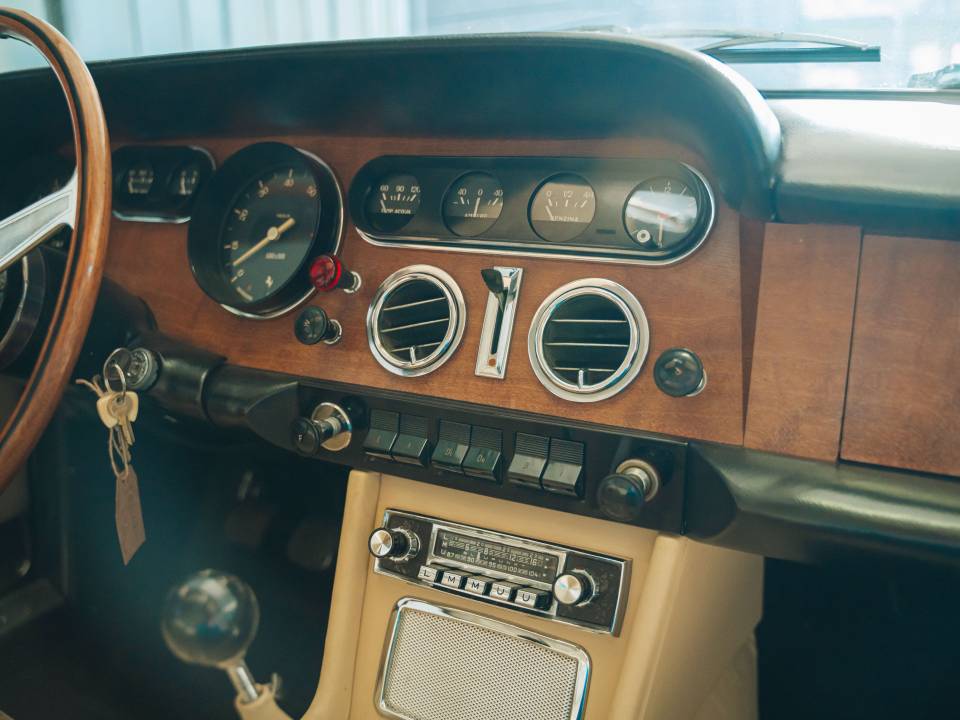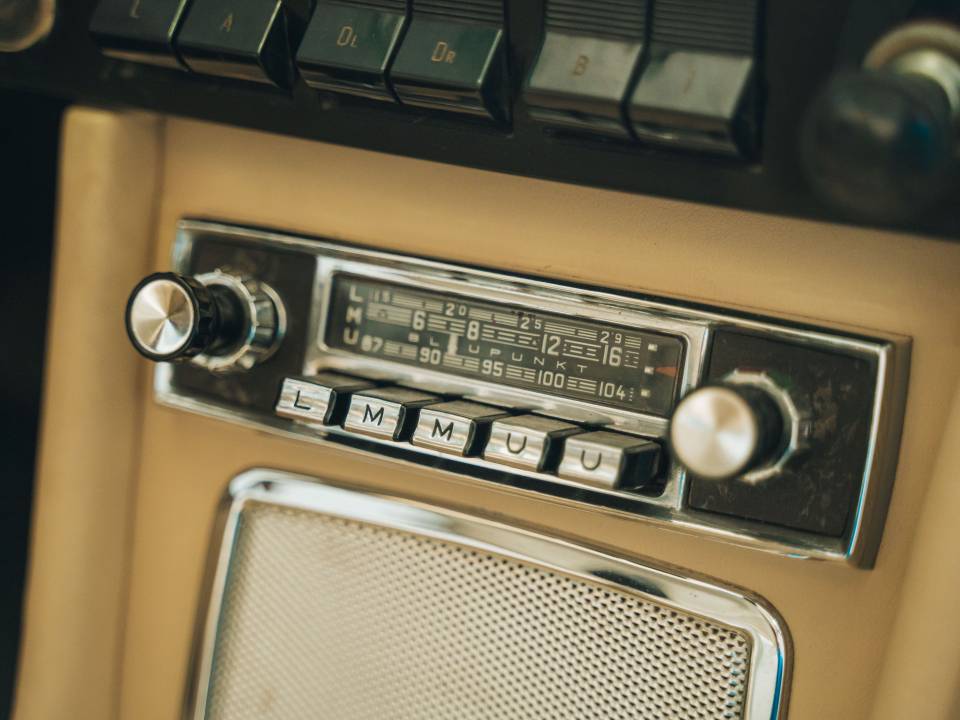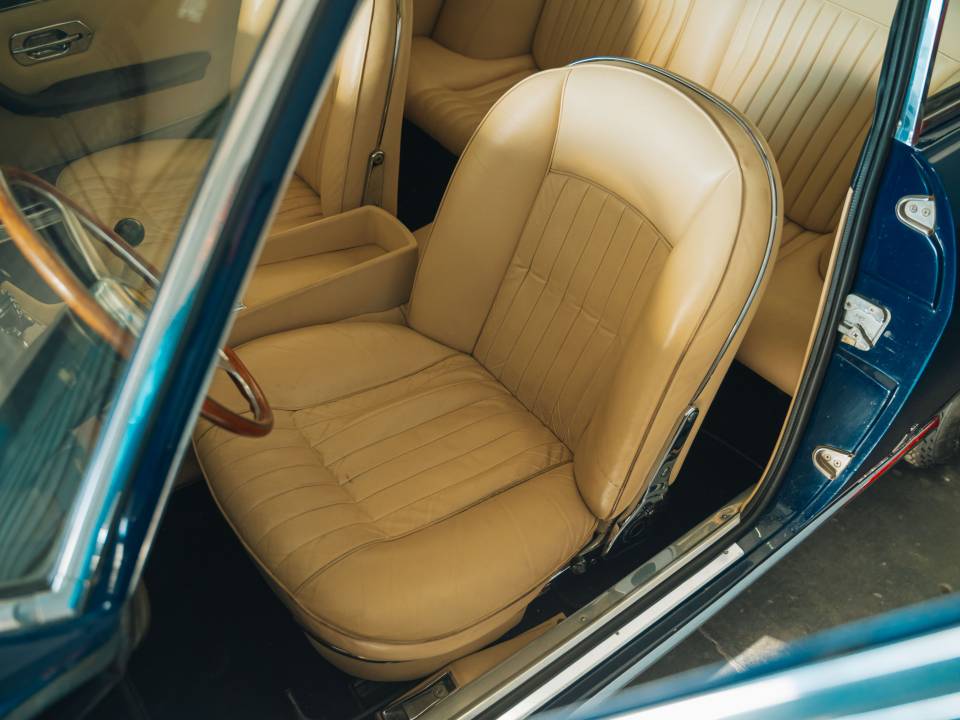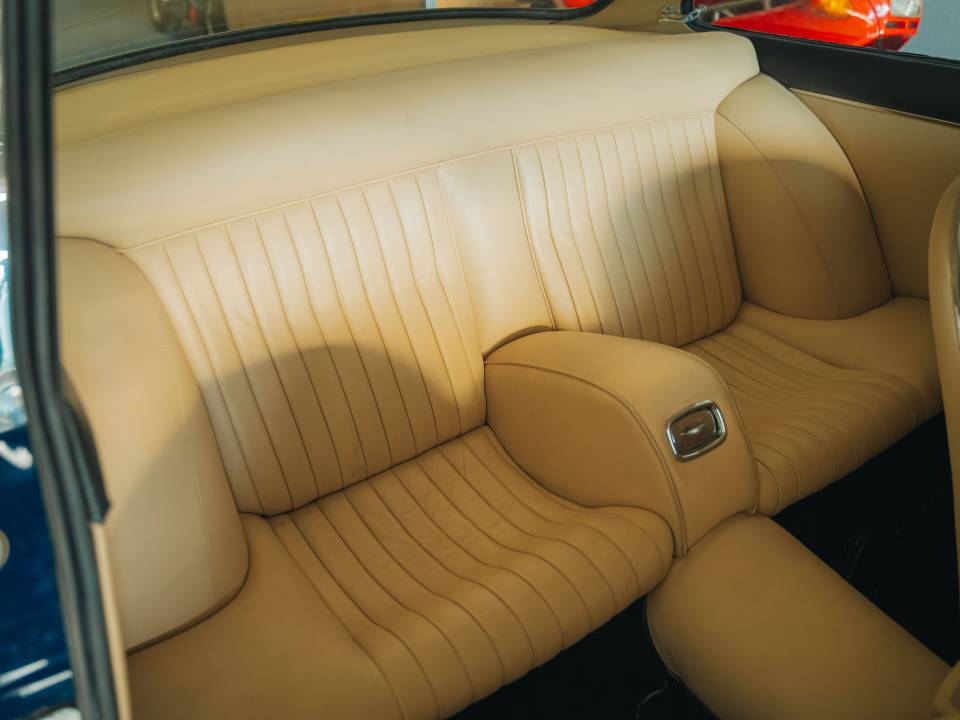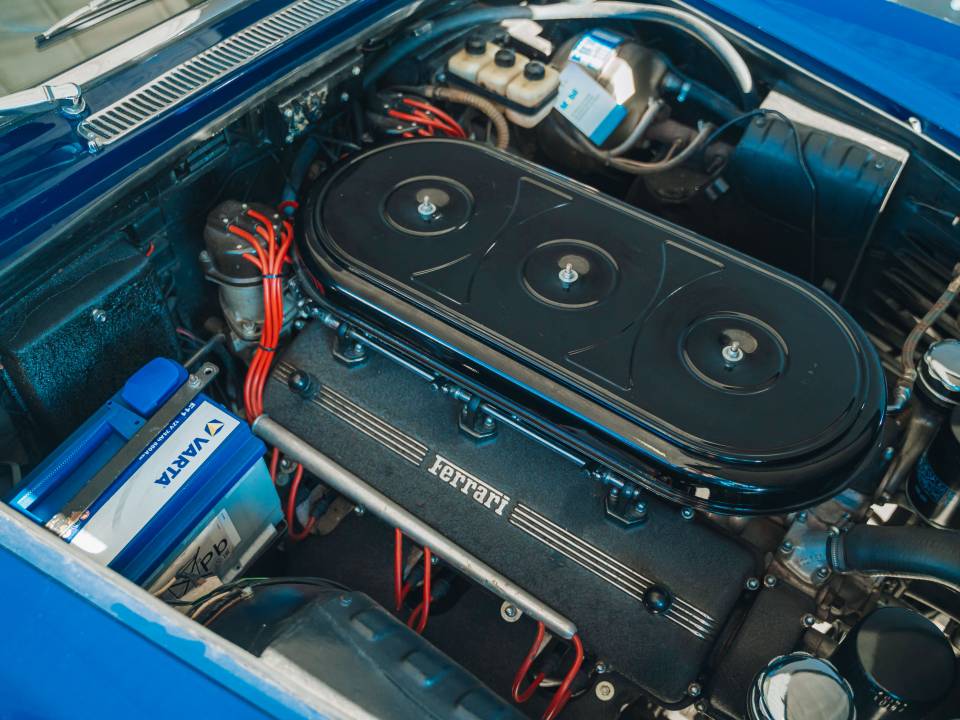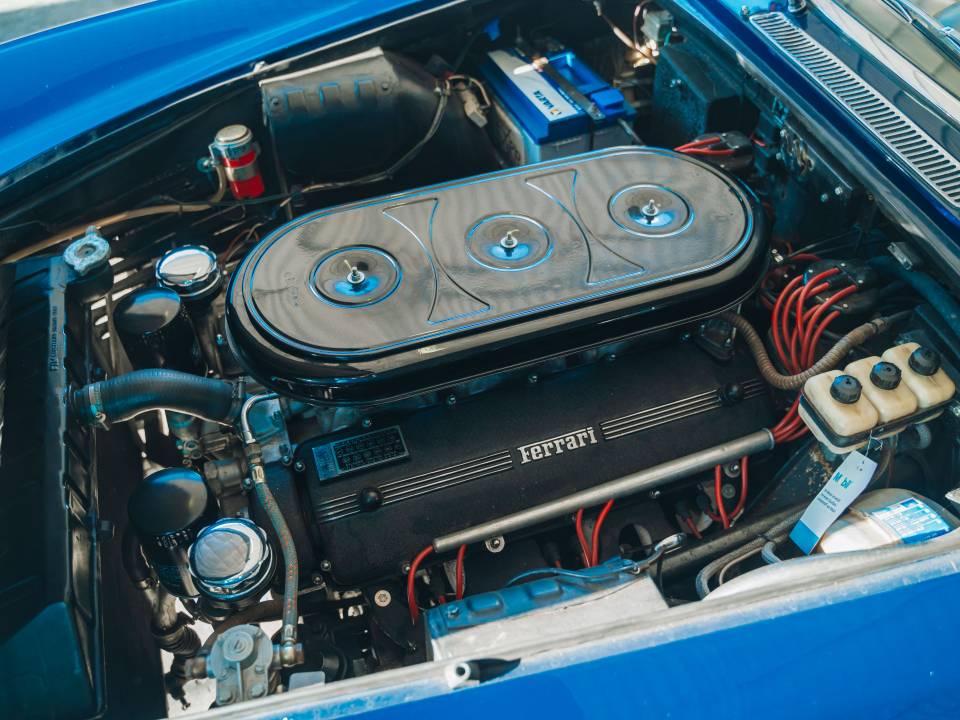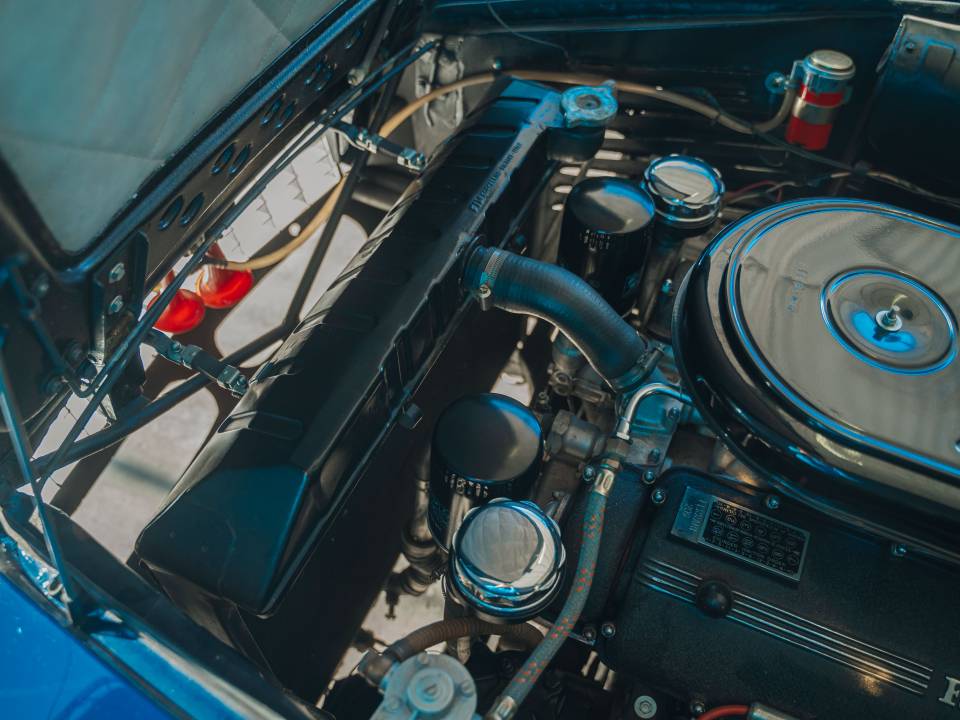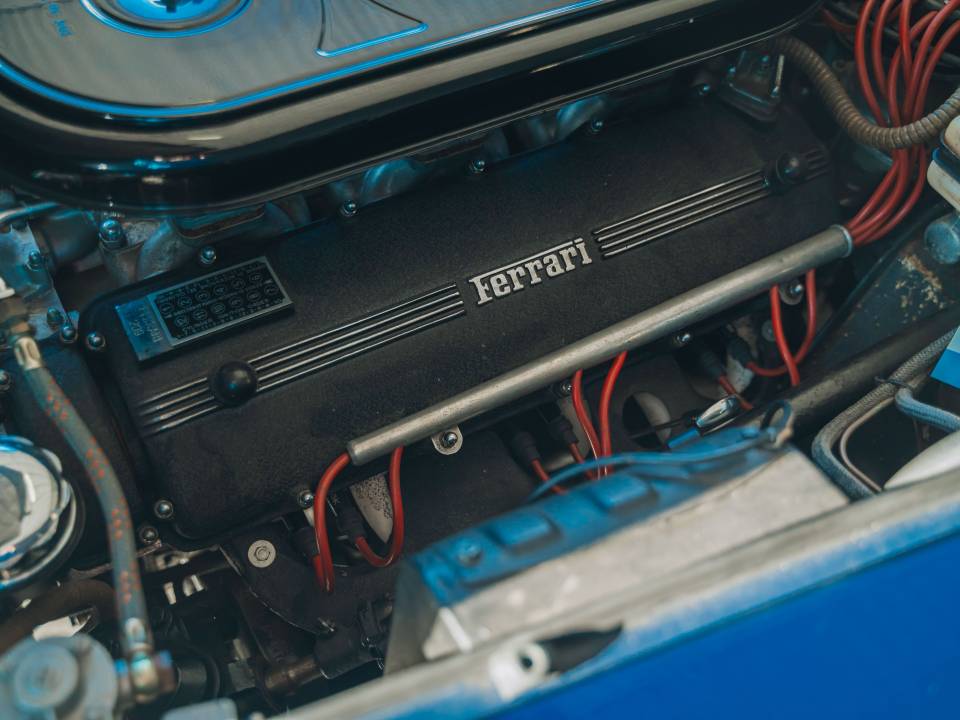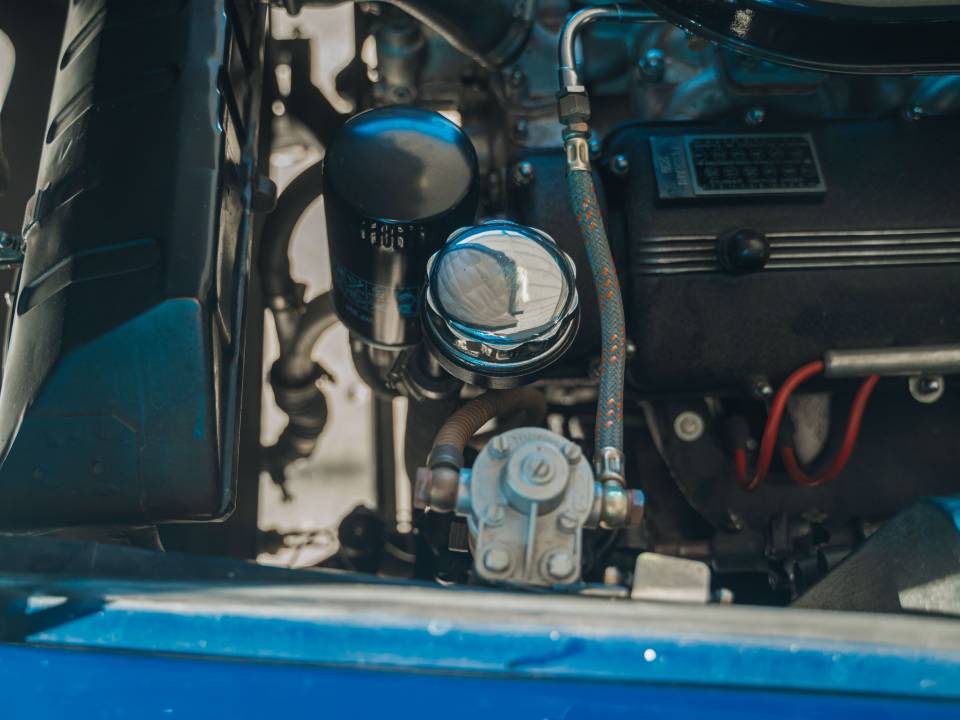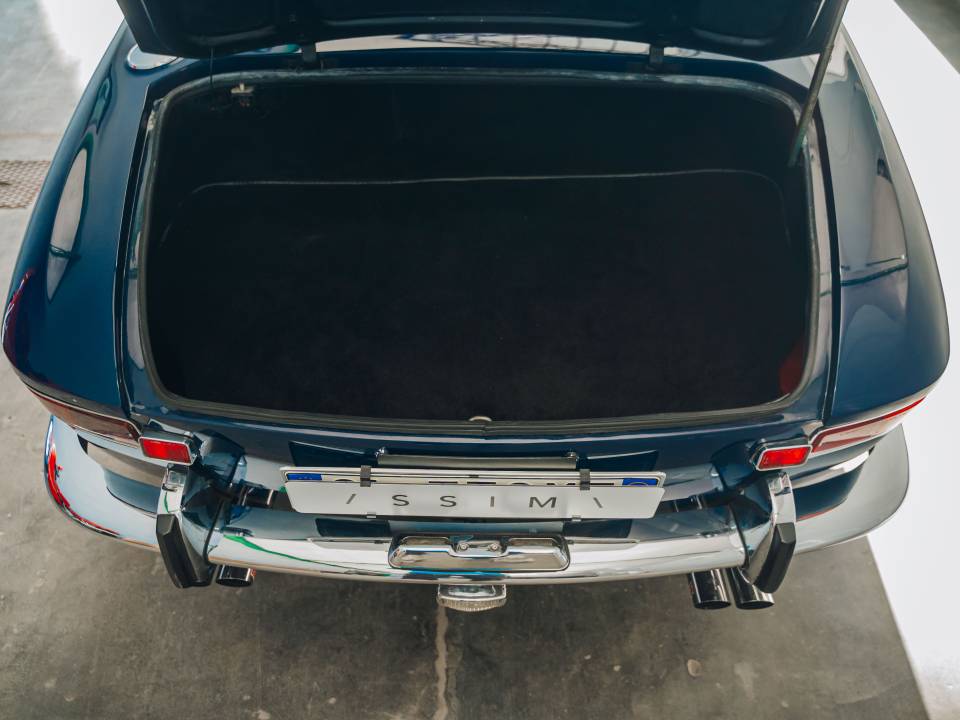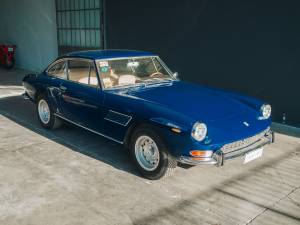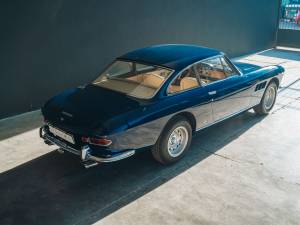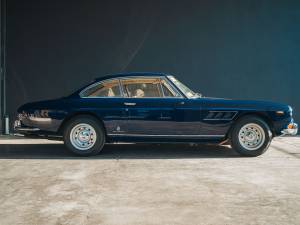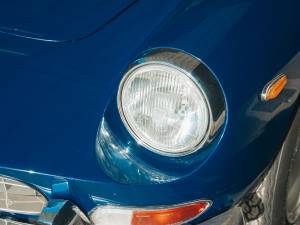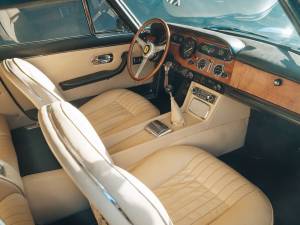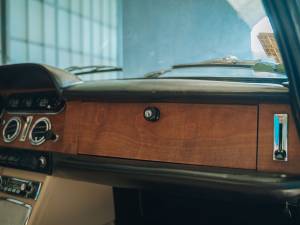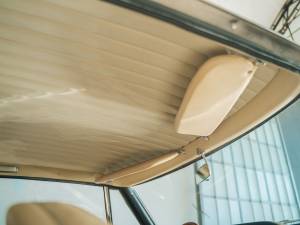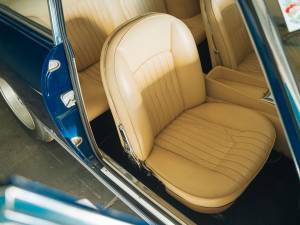1966 | Ferrari 330 GT 2+2
1966 Ferrari 330 GT 2+2, Campagnolo Wheels and a Refurbished Engine Bay
1966 Ferrari 330 GT 2+2, Campagnolo Wheels and a Refurbished Engine Bay
1966 Ferrari 330 GT 2+2, Campagnolo Wheels and a Refurbished Engine Bay
Descripción
As the 250 engine was being phased out in the early 1960s, Ferrari set out to develop a new 2+2 based around the company’s heavily revised 4-liter 330 engine. The outgoing Ferrari 250 GT/E was a remarkable success for the brand; in production between 1959 and 1963, nearly 1,000 examples were sold over three series of the car. In 1963, Ferrari began selling the 250 GT/E follow-up- the 330 America- which was just a stopgap until the clean sheet design was ready, resulting in a car that was nearly identical to the GT/E just fitted with the larger engine. The new car, the 330 GT 2+2, was first shown at the 1964 Brussels Motor Show and was a significant leap forward over the outgoing 250-based car. A unique quad headlight front-end treatment was paired with a much more modern-looking tail, and a 50mm wheelbase stretch resulted in a car that was much more visually resolved and offered increased cabin space for passengers both up-front and in the back. The following year, the series 2 330 GT 2+2 was released, featuring a more conventional 2-headlight front end and the addition of a 5-speed manual gearbox, this car is arguably one of the most beautiful 4-seat Ferraris ever produced, and with just 455 examples produced, is one of the least common as well.
This Ferrari 330 GT 2+2 is one of the coveted Series 2 cars and was produced in March of 1966. Finished in a stunning shade of deep non-metallic blue, this is an excellent, largely original example of one of Ferrari’s quintessential V12-powered 2+2 grand touring cars. The shape for this 330 is attributed to Pininfarina, but the designer who is given credit for the shape is actually American Tom Tjaarda during his tenure at the famed design house. One of the few options on these cars when new was the choice between a set of Borrani wire wheels or Campagnolo alloys. This car is fitted with the single-lug Campagnolos, which gives the car a more modern appearance over the more classic wires.
The interior is wrapped in beautiful cream leather, covering the seats, center console, and door cards. An original-style Blaupunkt radio is fitted in the center console with a single speaker behind an aluminum grille sitting below it. This car is fitted with power windows, and a full suite of gauges is affixed across the top of the wooden dashboard. The experience of driving this era of Ferrari is truly second to none- as you slide into the driver’s seat, you are greeted by a beautiful Nardi wood steering wheel, framing a large speedometer and tachometer built by Veglia. These Series 2 cars received an updated pedal box with suspended pedals, which make heel-toe downshifts simpler and allow you to feel instantly familiar with the car.
Under the hood sits a 4-liter single overhead cam “Colombo” V12 rated for 300 horsepower and topped by a trio of Weber twin-choke carburetors. Power is then sent through a 5-speed manual gearbox out to the rear wheels. Under the hood, this 330 presents quite well, with the black crackle-coated cam covers, refinished to have the Ferrari logo, in bare aluminum. New-looking red sparkplug wires are fitted to the twin rear distributors, and some of the notoriously trouble-prone braided hoses look to have been replaced. The Colombo V12 is a thing of beauty and even more outstanding when you get to listen to it operating- this car with its combination of Weber carburetors and quad-exit Ansa exhaust, will put a smile on your face every time you press the throttle.
For decades, the 2+2 Ferraris were deemed “uncool” by buyers, and thus, values remained low for far too long. Finally, people are seeing that these cars are just as beautiful as their 2 seat counterparts and, with the same underpinnings, provide a similar level of driving excitement. With that, values have been steadily climbing in recent years, but for someone looking to get into a vintage Ferrari they can drive and enjoy, cars like this 330 GT 2+2 still represent great value.
Mentre il motore 250 stava venendo gradualmente sostituito all'inizio degli anni '60, Ferrari si mise al lavoro per sviluppare una nuova 2+2 basata sul fortemente revisionato motore 4 litri. La precedente Ferrari 250 GT/E era stata un notevole successo per il marchio; in produzione tra il 1959 e il 1963, ne furono venduti quasi 1.000 esemplari. Nel 1963, Ferrari iniziò comunque a vendere il successore della 250 GT/E - la 330 America - che era solo una soluzione temporanea fino a quando il nuovo modello non fosse pronto. Un'auto praticamente identica alla GT/E solo dotata del motore più grande.
La nuova vettura, la 330 GT 2+2, fu presentata per la prima volta al Salone dell'Auto di Bruxelles nel 1964 ed era un notevole salto in avanti rispetto alla precedente modello basato sulla 250. Nel 19645 fu lanciata la serie 2 della 330 GT 2+2, caratterizzata da un muso anteriore rivisto rispetto alla versione del 64, e l'aggiunta di un cambio manuale a 5 marce. Questa auto è probabilmente una delle più belle Ferrari a 4 posti mai prodotte e, con soli 455 esemplari prodotti, è anche una delle più rare.
Questa Ferrari 330 GT 2+2 è stata prodotta nel marzo del 1966. Rifinita in uno splendido colore blu non metallico profondo. Il design di questa 330 è attribuito a Pininfarina, ma il designer a cui viene dato il merito per la forma è in realtà l'americano Tom Tjaarda durante il suo lavoro presso dal ditta di Cambiano. Questa vettura è dotata di cerchi Campagnolo con un unico dado, che conferiscono all'auto un aspetto più moderno rispetto ai più classici raggi.
L'interno è rivestito in bellissima pelle color crema, che copre i sedili, la console centrale e le pannellature delle porte.
La vettura e’ matching number ma non matching colors, nasceva infatti Celeste con interni rossi.
l'Auto visibile presso il nostro showroom a Verona.
Vuoi fare un'offerta? Vai su issimi.com e fai partire l'asta!
Auto visibile presso il nostro showroom a Verona.
I nostri servizi includono:
- Valutazioni permute
- Logistica e consegna a casa
Queste informazioni non sono le informazioni precontrattuali previste dal D.Lgs. 21/2014, ma una semplice indicazione sommaria del veicolo, che dovrà essere completata da specifiche informazioni precontrattuali fornite dal Venditore proponente prima che assumiate impegni.I prezzi esposti sul sito internet sono indicativi e potrebbero subire variazioni.
Il prezzo finale non è comprensivo del 2% di commissioni della piattaforma.
Detalles del vehículo
Datos del vehículo
- Marca
- Ferrari
- Serie del modelo
- 330
- Modelo
- 330 GT 2+2
- Primera fecha de registro
- No provisto
- Año de construcción
- 1966
- Kilometraje (leer)
- 76.498 km
- Número de chasis
- 8271
- Número de motor
- No provisto
- Número de la caja de cambios
- No provisto
- Coincidencia de números
- No
- No. de propietarios anteriores
- No provisto
Detalles técnicos
- Carrocería
- Coupe
- Potencia (kW/CV)
- 221/300
- Capacidad cúbica (cm³) - acerca de
- 3967
- Cilindro
- 12
- Puertas
- 2
- Manejo
- Izquierda
- Caja de cambios
- Manual
- Marchas
- 5
- Engranaje
- Trasero
- Freno delantero
- Disco
- Freno trasero
- Disco
- Combustible
- Gasolina
Configuración individual
- Color exterior
- Azul
- Color interior
- Beige
- Material interior
- Cuero
Equipamiento opcional
- Campagnolo Wheels
- Blaupunkt Radio
- Refurbished Engine Bay
Condición, registro y documentación.
- Tiene peritaje
- Condición
- Informe de inspección del libro
- Matriculado
- Listo para conducir

